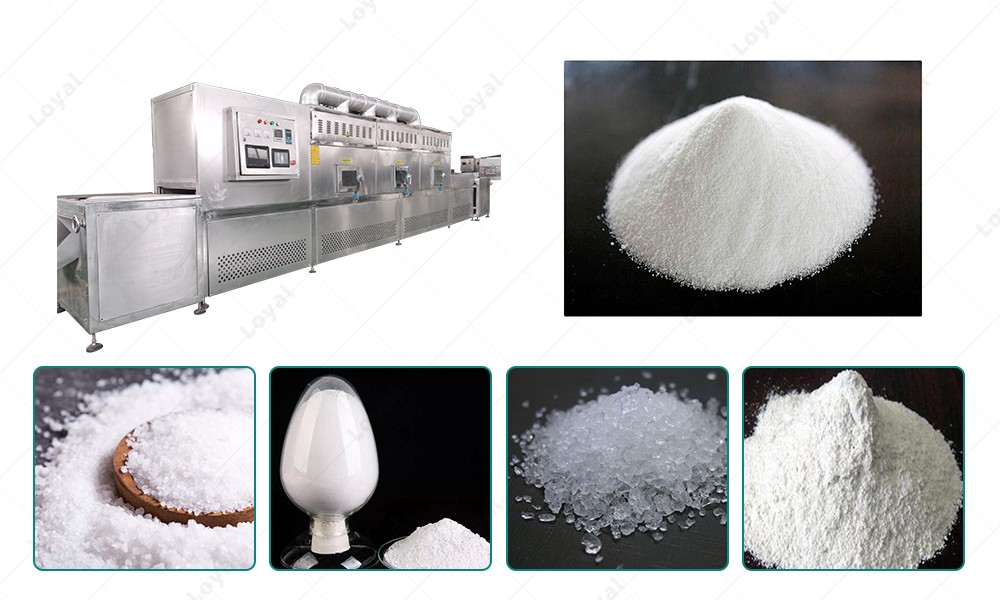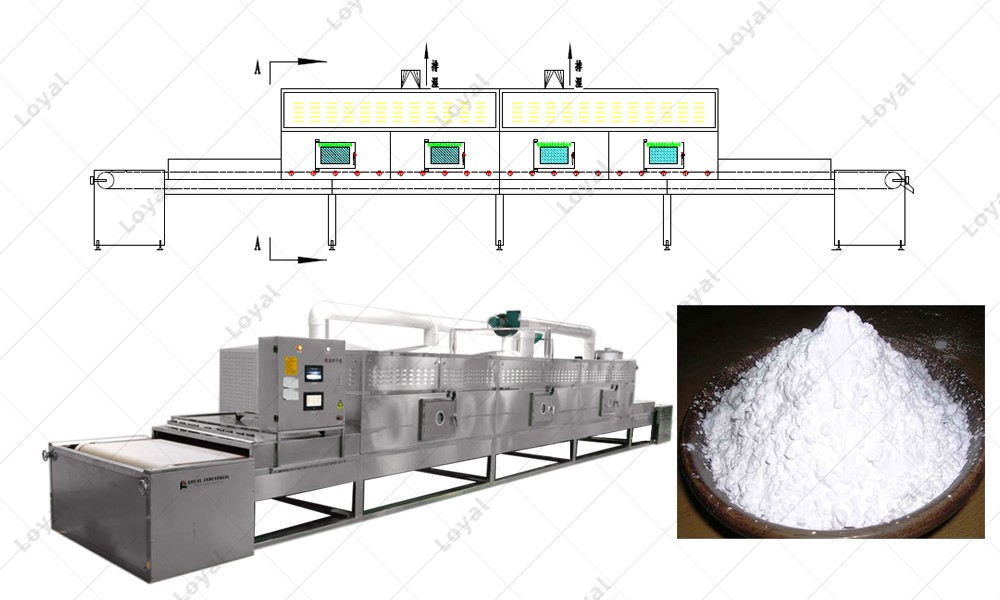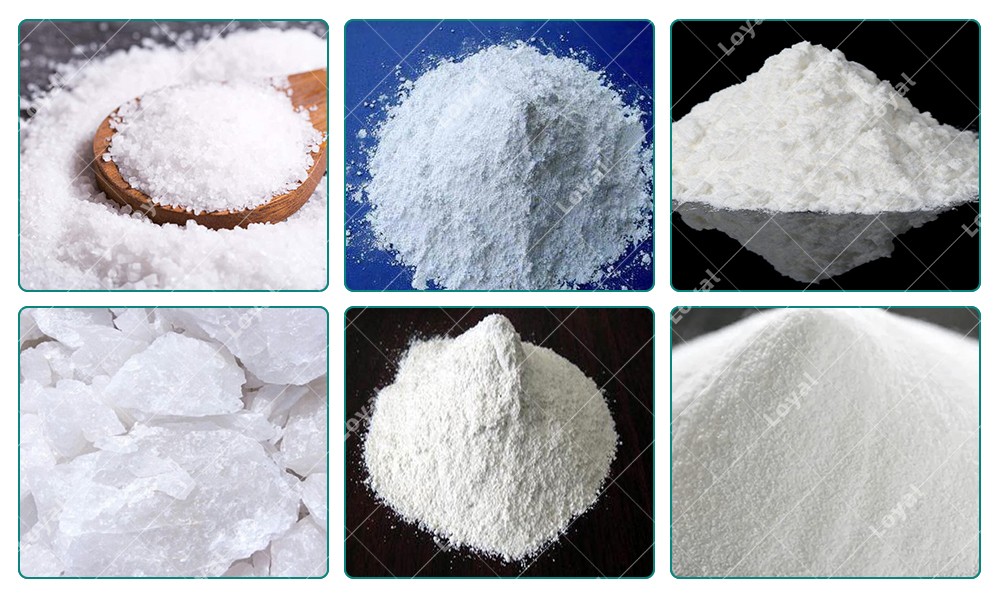
- Shandong Loyal Industrial Co.,Ltd.
- Macaroni Production Machine Instant Noodle Machine Biscuit Making Machine
Home> Company News> Silicon Dioxide Drying Microwave Oven

Silicon Dioxide Drying Microwave Oven
2023-04-12 10:55:42Description Of Silicon Dioxide Drying Oven
Silica drying ovens are specialized equipment for the production of silica powder for various industrial and technical applications, including use as a filler in the manufacture of composite materials, electronic components and semiconductors. The oven is designed to evaporate any residual moisture in the silica powder to achieve high purity, which is necessary for many applications. Ovens can be heated by a variety of methods, including infrared, radiant or convective heating, depending on the specific requirements of the production process. Silica powder is placed in a drying oven and heated to a specific temperature and time, carefully controlled to prevent powder damage or changes in physical or chemical properties. Ovens can also use a vacuum or a controlled atmosphere to further enhance the drying process and prevent any contamination. In general, the silica drying oven is the key equipment for the production of high-quality silica powder, which is indispensable in a wide range of industrial and technical applications.

How To Dry The Silicon Dioxide
- Preheat the oven to the desired temperature, usually between 105-110°C.
- Weigh the silica sample to be dried and place it in a crucible or a silica gel tray.
- Place the crucible or silicone tray containing the sample in the oven.
- Dry the sample for approximately 2-3 hours, or until the sample reaches a constant weight. It is important to check the weight of the sample periodically during the drying process to ensure it is completely dry.
- Once the sample has reached constant weight, remove it from the oven and allow it to cool to room temperature.
- Weigh the sample again to confirm that it has dried properly. The weight of the dried sample should be the same as the last weighing.
- Store the dried silica sample in a clean, dry container until it is ready for its intended application.
It is important to note that drying times and temperatures may vary, depending on the specific type and amount of silica being dried, and the specific requirements of the production process. Therefore, it is important to consult the manufacturer's instructions or consult an expert in silica drying to ensure the best results.

Working Principle Of Industrial Microwave Silicon Dioxide Oven
Industrial microwave silica ovens work by using microwave radiation to heat and dry silica samples. Microwaves are a form of electromagnetic radiation with a frequency range of approximately 300 MHz to 300 GHz. These microwaves are directed at a radiation-absorbing silica sample, causing water molecules in the sample to vibrate rapidly and generate heat. The principle behind this process is that microwave energy is absorbed by the water molecules present in the sample, causing them to heat up and evaporate, drying the silica material. This method of drying is often faster and more efficient than traditional drying methods. The oven is designed for drying and heating silica samples and typically has a microwave generator, waveguide and drying chamber. A waveguide is used to direct the microwave energy into the drying chamber where the silica sample is placed. The oven uses a timer and temperature control system to regulate the drying process, ensuring that the sample is heated to the correct temperature for the correct amount of time. This helps ensure consistent and repeatable results, which is especially important in industrial applications where consistency and quality are important factors. Overall, industrial microwave silica ovens are an efficient and effective method of drying silica and are used in a variety of industrial applications, including the production of semiconductors, electronic components, and various other materials that use silica.
Microwave Silicon Dioxide Dryer's Advantage
|
Speed |
Microwave drying is typically much faster than traditional drying methods, saving production time and reducing energy costs. |
|
Efficiency |
Microwave drying is generally more energy efficient than traditional drying methods, saving costs in the long run. |
|
Uniform Heating |
Microwave drying is more uniform than traditional drying methods, and the product quality and consistency are better. |
|
Reduce The Risk Of Contamination |
Since microwave drying is a closed system, there is less risk of external contamination. |
|
Reduced Labor Costs |
Because microwave drying is generally faster than traditional drying methods and requires less monitoring and intervention, labor costs can be reduced. |
|
Reduce Equipment Maintenance |
Microwave dryers require less maintenance than traditional drying equipment, which can reduce downtime and related costs. |
Overall, industrial microwave silica dryers offer many advantages over traditional drying methods, making them valuable tools for industrial production applications.

Silicon Dioxide Product Display
Silica is a chemical compound that is widely used in various industrial products due to its unique properties. It is an oxide of silicon with the chemical formula SiO2. Some common industrial applications of silica include:
|
Building Materials |
Silica is the main component in the production of various building materials such as concrete, cement, and bricks. It is added to these materials in the form of silica fume or nano-silica to improve their strength, durability and moisture resistance. |
|
Glass And Ceramics |
Silica is a key ingredient in the production of glass and ceramics because of its ability to withstand high temperatures and provide stability to the material. |
|
Electronics |
Silicon dioxide is a key material used in the semiconductor industry to produce electronic components such as integrated circuits and transistors. |
|
Food And Pharmaceutical Industry |
Silicon dioxide is used as an anti-caking agent in the food industry and as a carrier for drug delivery in the pharmaceutical industry. |
|
Cosmetics |
Silicon dioxide is also used as an absorbent and anti-caking agent in cosmetics. |
Overall, silica is an extremely versatile compound with a wide range of industrial applications. Its unique properties make it an essential ingredient in many products across a variety of industries.

 Commercial Japanese Panko Bread Crumb Grinder Machine
Commercial Japanese Panko Bread Crumb Grinder Machine Japanese Bread Crumbs Processing Line
Japanese Bread Crumbs Processing Line Automatic Cookies Making Machines
Automatic Cookies Making Machines Fully Automatic Biscuit Making Machines
Fully Automatic Biscuit Making Machines